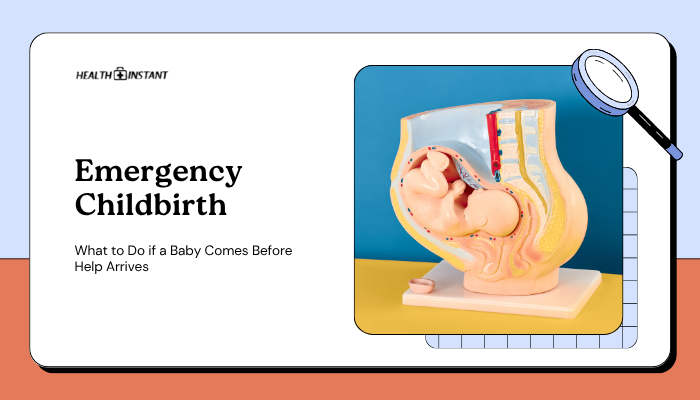Introduction
Sometimes, you might be far from professional medical help—like hiking in remote locations or stuck indoors during severe weather. Knowing how to provide immediate first aid can prevent complications and, in some cases, save lives.
While these guidelines should not replace professional care, they can stabilize an injured person until help arrives. This article covers basic steps to handle common injuries such as cuts, burns, and sprains in do-it-yourself (DIY) first aid scenarios.
Essential First Aid Principles
Before addressing specific injuries, remember these core principles:
- Safety First
- Assess whether the scene is safe before assisting someone else.
- Avoid rushing into dangerous conditions (e.g., falling debris, fire hazards).
- Assess whether the scene is safe before assisting someone else.
- Call for Help
- If possible, contact emergency services as soon as you can.
- Even if you handle immediate care, professional evaluation is often necessary.
- If possible, contact emergency services as soon as you can.
- Calm and Reassure
- A steady demeanor helps the injured person remain composed, potentially improving outcomes.
- A steady demeanor helps the injured person remain composed, potentially improving outcomes.
- Use Protective Barriers
- If available, wear gloves to reduce infection risk.
- In a pinch, use plastic bags or layered cloth if no gloves are on hand.
- If available, wear gloves to reduce infection risk.
Wound Care and Bleeding Control
Minor Cuts and Abrasions
- Clean
- Rinse gently under clean, running water to remove debris.
- Use mild soap if available, but avoid scrubbing aggressively.
- Rinse gently under clean, running water to remove debris.
- Apply Antiseptic
- An antiseptic wipe or solution helps prevent infection.
- Pat the area dry with a sterile or clean cloth.
- An antiseptic wipe or solution helps prevent infection.
- Cover
- Use a bandage or sterile gauze to protect from dirt and friction.
- Change dressings regularly to keep the wound clean.
- Use a bandage or sterile gauze to protect from dirt and friction.
Major Bleeding
- Apply Direct Pressure
- Use clean cloth or gauze and press firmly.
- Elevate the injured limb above heart level if possible, without moving a suspected fracture.
- Use clean cloth or gauze and press firmly.
- Maintain Pressure
- Do not remove the initial cloth if it soaks through. Place additional layers on top.
- Do not remove the initial cloth if it soaks through. Place additional layers on top.
- Tourniquet (Last Resort)
- Use only if bleeding is life-threatening and you are trained.
- Incorrect tourniquet application can cause additional damage.
- Use only if bleeding is life-threatening and you are trained.
Burns and Scalds
Minor Burns (First and Second Degree)
- Cool the Burn
- Immediately rinse with cool (not icy) running water for 10–20 minutes.
- This helps stop deeper skin damage.
- Immediately rinse with cool (not icy) running water for 10–20 minutes.
- Protect the Area
- Apply a non-stick bandage or sterile gauze loosely.
- Avoid ointments or oils unless recommended, as they can trap heat.
- Apply a non-stick bandage or sterile gauze loosely.
- Pain Relief
- Consider over-the-counter pain relievers (acetaminophen, ibuprofen) to manage discomfort.
- Watch for signs of infection (redness, swelling, pus).
- Consider over-the-counter pain relievers (acetaminophen, ibuprofen) to manage discomfort.
Severe Burns
- Do Not Submerge large burn areas in water, as it can cause shock.
- Remove Constrictive Clothing or jewelry near the burn if not stuck to skin.
- Cover Lightly with a clean, cool cloth and seek professional help quickly.
Sprains, Strains, and Possible Fractures
Sprains and Strains (RICE Method)
- Rest
- Cease activities that aggravate the injury.
- Cease activities that aggravate the injury.
- Ice
- Apply cold packs (wrapped in a cloth) in 15–20 minute intervals to reduce swelling.
- Apply cold packs (wrapped in a cloth) in 15–20 minute intervals to reduce swelling.
- Compression
- Use an elastic bandage to stabilize, but not so tight it cuts off circulation.
- Use an elastic bandage to stabilize, but not so tight it cuts off circulation.
- Elevation
- Prop the injured area above heart level if possible.
- Prop the injured area above heart level if possible.
Suspected Fractures
- Immobilize
- Use splints (sticks, rolled towels) to keep the bone from moving.
- Stabilize joints above and below the injury site.
- Use splints (sticks, rolled towels) to keep the bone from moving.
- Avoid Moving
- Do not attempt to realign bones or push them back if protruding.
- Do not attempt to realign bones or push them back if protruding.
- Seek Urgent Medical Care
- If help is far away, keep the person comfortable and watch for shock symptoms (pale skin, rapid breathing).
- If help is far away, keep the person comfortable and watch for shock symptoms (pale skin, rapid breathing).
Head Injuries and Concussions
- Evaluate Consciousness
- Ask simple questions to test alertness.
- Look for confusion, memory gaps, or slurred speech.
- Ask simple questions to test alertness.
- Stabilize Neck
- If a severe fall or accident is involved, treat it as a potential spinal injury.
- Minimize head or neck movement until experts arrive.
- If a severe fall or accident is involved, treat it as a potential spinal injury.
- Monitor Symptoms
- Headache, dizziness, repeated vomiting, or drowsiness could indicate a serious brain injury.
- Keep the person awake if possible, and check for changes in behavior.
- Headache, dizziness, repeated vomiting, or drowsiness could indicate a serious brain injury.
When to Seek Professional Help
DIY first aid is only a stopgap measure. Certain situations demand immediate professional attention:
- Uncontrolled bleeding that does not improve with direct pressure
- Difficulty breathing or suspected severe allergic reactions
- Seizures, unconsciousness, or suspected spinal injuries
- Head injuries with confusion, convulsions, or persistent vomiting
- Serious burns, fractures, or deep puncture wounds
Even after providing initial care, seek evaluation from a healthcare provider. Hidden complications can worsen without expert assessment.
Preparing for Emergencies
- Stock a First Aid Kit: Include bandages, antiseptics, gloves, pain relievers, and any personal medications.
- Learn CPR and Basic First Aid: Certification courses through the Red Cross or local organizations help build confidence.
- Create a Communication Plan: Ensure phone numbers for emergency services, family contacts, and your healthcare provider are easily accessible.
- Practice Scenarios: Role-play or discuss how each family member should respond to injuries or accidents.
Conclusion
DIY first aid can be critical in stabilizing injuries—like cuts, burns, and possible fractures—during times when professional help is not immediately at hand. By keeping a well-supplied first aid kit, learning basic care methods, and knowing when to escalate to emergency services, you can reduce risks and improve outcomes in unforeseen situations. Stay proactive with regular training and maintain your supplies, so you’re always prepared to step in and assist until medical professionals take over.
References
- American Red Cross. (2021). First Aid/CPR/AED participant’s manual.
- Centers for Disease Control and Prevention (CDC). (2020). Injury prevention and control.
- St John Ambulance. (2019). First aid guidance for household injuries.
- Mayo Clinic. (2022). Basic first aid tips for common injuries.
- World Health Organization. (2018). Emergency care systems for universal health coverage.
Disclaimer: The guidelines in this article are for informational purposes. They do not replace professional medical advice or certified first aid training. Always contact healthcare professionals or emergency services for severe injuries or uncertain situations.






